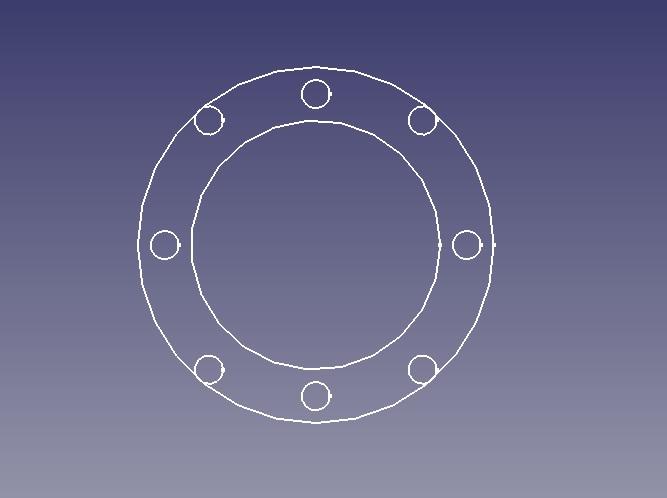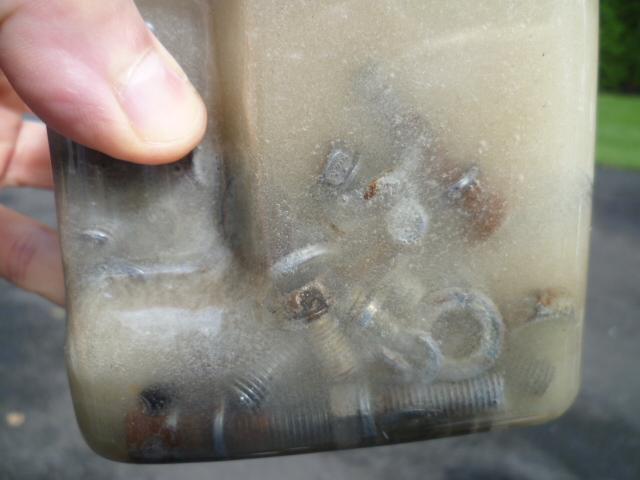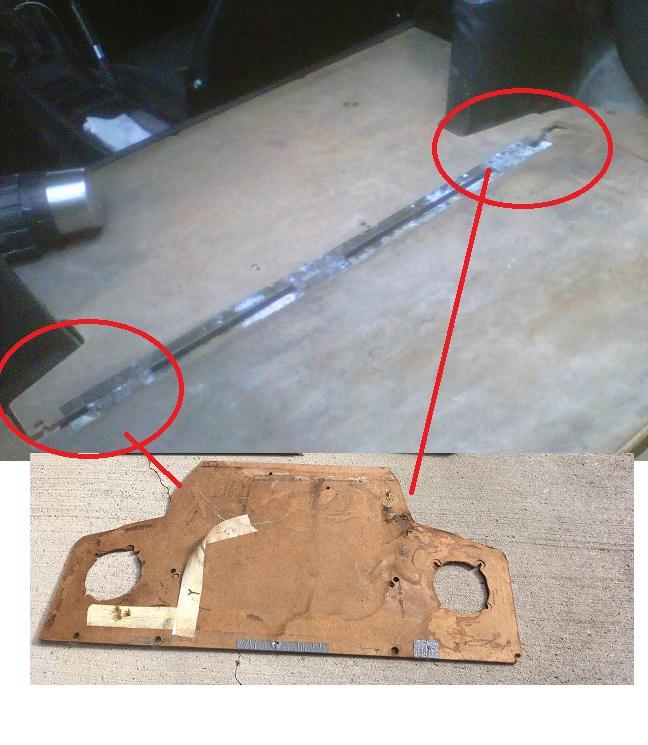Everything posted by Captain Obvious
-
Air / Fuel Meter Recommendations
LOL. I was just thinking that if I really got into it, I could probably program something up to control the heating element for the sensor. But I got bigger fish to fry first. Plenty of other projects in the way before I would get to that point in my list. Haha! I've never messed with the ESP8266 stuff. I've got just enough experience with PICAxe and Arduino stuff to be dangerous. The ESP board is way more powerful than anything I've needed so far.
-
Air / Fuel Meter Recommendations
Thanks for all the input guys. I was thinking I would put mine in the glovebox for now as well. I'm still hoping to get a couple weeks more driving out of my car before the season ends though. I don't want to go dropping the exhaust now. It won't be long before they salt the roads and I'll do some of this work then.
-
Just Another Damned Z Car Project Thread
And here's what I was talking about maybe not having enough meat with a 100mm OD. Here's a quick sketch I threw together... 100mm OD, 70mm ID and two sets of bolt holes. One on a 60mm square and the other on a 60x70mm rectangle. All with the centers concentric. It looks to me like you might have some troubles with some of the holes being to close to the edge: So I don't know if the bolt pattern for the 350Z throttle body is 60x70, but I just used what I could discern from your ruler pics earlier. It looks like trouble.
-
1973 Rebuild
Thanks Matthew. I think I understand what you did now. I've had my parking brake handle out a couple times in the past to make some modifications to it and I never dropped the driveshaft, but I did have the seats out. Anyway, I don't remember how bad my rubber seal was, but it was at least good enough that I put it back in. I also don't drive my car in the wet either, so it doesn't matter as much. Thanks again. and maybe I'll do something like that next time
-
Citric acid and rust
I found the solution slowed down removing the original yellow chromate and zinc as it was used. Maybe the rust removing properties stayed about the same, but the original foaming as the yellow disappeared and (what I believe was) the zinc got eaten off slowed down as the solution was used. For that reason, I changed out the solution often and that's why I went through 30 pounds of it. If you haven't tried it yet, put something that still has some of the original plating and chromate on it into the bath and see what happens. It comes out beautiful, but unplated. If you pull it before it's completely done, you can even see the layers being eaten off. Kinda like sanding through multiple layers of paint where the different layers feather out as you sand to the metal at the bottom. Yellow layer, and thin metal layer beneath that which I can only imagine is the original zinc plate. I haven't disposed of the used solution yet either. I didn't just dump it down the drain. If it was just rust and iron, I wouldn't be worried at all and I would just dump it. But that yellow coating (involves chrome?) and the zinc have me a little concerned. I'm going to call the guys at my local water company and see what they think. They may tell me it's no problem, just pour it down the drain, or they may tell me to hold it for one of the local hazardous waste drop-offs we have occasionally.
-
Citric acid and rust
Absolutely! I was geeking out last night, and I plan to do more today. About half the very small parts are hardware bits and pieces for carburetors. The trouble is figuring out what goes with what. As I tossed stuff into a box at the beginning of this project, it was "No problem, I'll remember what this went to". Well now that I'm looking at a vast pile of tiny yellow parts that I took apart starting maybe two months ago? Not so easy... LOL. I tried to wire the small parts together in a configuration that would make them easy to identify and sort into appropriate applications, but even that plan seems to have gone all muddy and indistinct. By the end of the pre-processing, I knew I was running out of time and I stopped being so contentious about what went with what. I just needed to get stuff done and off to the platers. The big stuff like the inspection lamp and coil bracket, etc. That stuff is easy. It's the little nuts and bolts that are the hard part. And it's a mix of round top and flat top carb parts. Anyway, a nice hot cup of tea or two and a comfy stool at the workbench and I'm good to go for the afternoon. That's my plan.
-
Citric acid and rust
That's a neat idea. Too late for me, but neat anyway. The longest springs I had were the return springs for the round top carbs. Next longest was the return springs for the throttle body. Oh well... Maybe next time.
-
1973 Rebuild
Thanks. If you get a chance, can you snap a pic of that black rubber piece laying loose not on the handle? I mean, I don't think I'm going to go pulling my brake handle apart again just to replace that rubber seal, but it would be nice to have options anyway.
-
Just Another Damned Z Car Project Thread
And thinking about it some more and looking at your ruler measurements on the bolt holes for the new throttle body... I'm not sure there's going to be enough meat with a 100mm outside diameter for the adapter if you need to keep the center bores concentric. Maybe your architect to watch for that when he draws it up in CAD?
-
1973 Rebuild
Brake handle looks great. I don't understand what you used for the rubber bushing though. Cap from a piece of black pipe? I'm not sure what you mean. Is this a product they sell, or something they put on the threaded ends just to protect the threads?
-
Citric acid and rust
Haha!!! One would assume!
-
Citric acid and rust
The black coating did not come easily with a finger. Came off with the wire wheel on the grinder, but even after that, the metal seemed to have a darker color to it. However, all that said, I just got the parts back from the plater, and it did not seem to affect how the parts looked after plating. Of course, I'm just looking at the yellow chromate coating and not the zinc underneath, but the parts look great. Couple small issues, but overall, I think it was a success. Everyone loves pics of boxes of newly plated parts, right?
-
Just Another Damned Z Car Project Thread
Heck no! I'm not poo-pooing a napkin sketch at all. I'd be SOL if it weren't for drawings like that! Haha! My question about the bore sizes goes like this... On your sketch, it's 70mm on the front side if your adapter. But what is the size of the hole on the manifold size (not shown on the napkin sketch)? If it's straight through 70mm, then you're going to have a step change in diameter when you hit the 50mm-ish hole at the inlet side of the manifold. You could probably open up the hole in the manifold some with a grinding burr, but I'm not sure you'd be able to get it all the way out to 70mm. That's what I meant by tapering the hole from 70 down to 50ish.
-
Citric acid and rust
Gotcha. And I also tried to do what you said and keep working it until it's down to bare metal. You'll see the pits where the rust used to be, but the rust is gone. So some other stuff I noticed with the citric acid bath... Some of the parts seemed to develop a black coating when left in the acid for long times. I assume it's due to the composition of the metal itself because it really followed the same type of part. If I had to guess, I would guess it was a higher carbon content steel parts and that was somehow causing a black oxide coating to form. For example... Shepherds hooks got black and so did throttle body mounting socket head cap screws. Most of the stuff didn't seem to care how long it was left in the bath or what temperature it was, but there were a couple things that didn't like extended soak. And (especially on the cold days towards the end of the process) I usually heated up the citric acid bath a little in the microwave to try to speed the de-rusting process, and it seemed the hotter I made it, the more likely that black coating occurred. My temps ranged from "just barely noticeable" to "I can still carry it without a hot mitt, but it's pretty hot". I didn't stick a thermometer in anything.
-
Air / Fuel Meter Recommendations
No, no, no... No apologies necessary! I ended up with the benefit of knowledge! The scary part now is I'm thinking "I could program up a little microcontroller to do that easy!"
-
Air / Fuel Meter Recommendations
@Jeff Berk I did a little digging into the heating element and how it's used. My (admittedly limited) research indicates that you are correct if you're talking about the older O2 sensors which would run the heating element all the time, but the new ones are monitored and modulated by the engine computer. In order to achieve A/F sensor accuracy, they want the sensor to stay at a constant temperature at all time, so they modulate the power sent to the heater to keep the temp constant. Older sensors didn't need that level of control, they just need to be really hot, but the newer wide band sensors need to stay at a constant temp. Here's the best article I could find about the whole thing: https://www.autoserviceprofessional.com/articles/1097-oxygen-sensor-heaters-how-do-you-know-if-that-heater-fault-code-is-real
-
Air / Fuel Meter Recommendations
Haha!! Guilty as charged! So I'll have to install some data collection software somewhere to hook up to the gauge. It certainly won't be to my phone...
-
Just Another Damned Z Car Project Thread
That sounds like it will work fine. Remember to keep the main bore concentric with the hole in the intake manifold. Only bringing that up because the holes in the new throttle body aren't in a square pattern. Make sure you get the center holes lined up and let the mounting holes fall where they fall. Also, you're changing the diameter along the way... Are you tapering the bore hole in the adapter to account for the change in diameters? I don't think you want big step changes in diameter.
-
Citric acid and rust
All of that stuff is phosphoric acid based. Ospho, Naval Jelly, etc. All creates a barrier of iron phosphate which helps deter the formation of rust in the future. I would have used a phosphoric based compound, but like Granny mentioned, the citric is so much safer. I mean the phosphoric isn't really that bad, but the citric is safer. That said... I did have a couple parts that were really bad (like an ashtray). For those parts, I did resort to the phosphoric stuff spot treatment method. Then once most of the rust was off in the worst spots, I put them in the citric bath with other parts.
-
Citric acid and rust
Yes, I did have issues with rusting after it came out of the citric acid solution, and no, the fact that it was chelated didn't do anything to prevent it. I started this whole process near the end of fall when it was still in the 80's in the afternoons and sunny. At that time, I would dump the hardware jars into a bucket, take them inside and rinse them off in the sink. Then take them back outside and dump them all on the hot black driveway to dry. It seemed that the faster they dried, the better the results (makes sense, right?). But I ran out of calendar time, and by the end of this process, it was in the sixties and there wasn't much direct sun to dry stuff on the driveway. So I set up a three stage rinse bath: 1) Pick out a part or two from the citric acid bath and shake it around in a bucket of clean water. 2) Move it from that bucket into another bucket with "cleaner" water and shake it around. 3) Move it from second water bucket into a small container of methyl alcohol (methanol). My thoughts were that a) it evaporated faster than water, and b) water is miscible with the alcohol so it would go into solution and help get H2O off the surface. Then after all that, lay it out on the semi-warm driveway to dry. That process got me through the end of the parts and the cooler fall days. Most of the larger parts got a quick wizz on the wire wheel after that just because I heard they looked better after plating if you did that. I didn't do the small hardware stuff because it was hard to hold. And yes, I zinnnnnngggged a couple parts across the yard. Only lost one piece in the end, and thankfully didn't put anything through any windows. Yes, it was a PITA, and yes it's done.
-
Citric acid and rust
That's a trick used with acetic acid to speed up the reaction. Apparently acetic acid works better than citric (but it stinks) and the addition of salt makes it work even faster. So fast, in fact, that they warn you not to put anything aluminum in the solution because it will be damaged. I don't know for positive sure if it has the same effect with citric, but like Granny, I did the same and added a little bit to my mix. I figured it wouldn't hurt, and may help. From what I understand, the citric does not convert the rust to anything, but it is "chelated" instead. And my (quite limited) understanding of the whole thing goes like this... Rust is not normally soluble in water, but additions of certain additives (like these mild acids) make it so that rust IS slightly soluble in the solution. I think that makes the acid additions to the water "chelating agents". So once you add citric acid to the water, rust becomes slightly soluble and "washes" off the parts. Doesn't happen quickly, but it happens. So back to my very limited understanding... There are several different combinations of iron and oxygen that can be called "rust", and the addition of salt changes the ionic characteristics of the solution and makes a broader range of them soluble. So in other words, "a wider range of rust types are soluble".
-
Citric acid and rust
Brothers from a different mother, I tell ya. I've gone through thirty pounds of the stuff in the past two months. It's really hard to get a good picture of the results, but I tried. Here's a handful of misc hardware. Before: I put the stuff in a wide mouth plastic container for a couple hours. When I first put the stuff in, it bubbles and becomes a little milky looking from all the tiny bubbles. I think that's the remaining yellow chromate and zinc plating being eaten off: And then after a couple hours. They aren't sparkling perfect, but are a whole lot better than when I started: Here's about the only good shot I have of before and after: I've got parts out for professional plating right now. Should be done soon.....
-
Air / Fuel Meter Recommendations
Wait... You're saying I'm not already a geek?
-
Air / Fuel Meter Recommendations
-
Subfloor mounting method?
And (just in case you didn't know what I was talking about), here's a pic highlighting the mods your PO made to that front panel. Someone cut the "wings" off:









